Introduction to KPI Meaning
Key Performance Indicator (KPI) Meaning
A Key Performance Indicator (KPI) is a measurable metric used to assess the success or progress of an organization, project, or individual in achieving their objectives. Essentially, KPIs are quantifiable measures employed to monitor and evaluate performance over a specific timeframe, providing a clear indication of how well an organization or individual is performing in relation to their goals.
KPIs find application across various industries and functional areas within organizations, including sales, marketing, finance, HR, and customer service. The selection of KPIs should align with the specific objectives and goals of the organization or project.
For KPIs to be effective, they must adhere to the SMART criteria: specific, measurable, achievable, relevant, and time-bound. This necessitates clear definition, quantifiability, realism, alignment with organizational objectives, and a specific timeline for accomplishment.
In summary, KPIs are pivotal in assessing organizational or individual performance, offering valuable insights into areas requiring improvement. Regular monitoring of KPIs enables organizations to discern trends, make data-driven decisions, and implement corrective measures to attain their objectives.
Importance of KPIs and the KPI meaning for measuring success and achieving goals
Certainly! The KPI meaning, or the meaning of Key Performance Indicators, is essential to understanding their importance for measuring success and achieving goals in organizations. Regardless, KPIs are measurable metrics that provide objective, quantifiable data to evaluate performance and progress. They help organizations to understand their current performance and compare it with their desired performance, allowing them to identify areas of strength and weakness and prioritize actions that will drive the organization towards its goals.
They’re are essential for measuring success and achieving goals in organizations because they provide objective, quantifiable data that can use to evaluate performance and progress. Also, they are measurable metrics that allow organizations to track and analyze their performance in various areas such as sales, marketing, finance, HR, and customer service.
The KPI meaning is that they help organizations to understand their current performance and compare it with their desired performance. This helps to identify areas of strength and weakness, and to prioritize actions that will drive the organization towards its goals.
The importance of KPIs can be summarized in the following points:
1. Clear direction and focus
Provide a clear direction and focus for the organization by outlining specific goals and objectives. This helps to ensure that all members of the organization are working towards a common purpose and that resources are allocated effectively.
2. Measurable performance
It provide a way to measure the performance of the organization objectively. This means that progress toward goals can be tracked and quantified, and areas of weakness can be identified and addressed.
3. Improved decision-making
It provide valuable insights that can inform decision-making. By analyzing KPIs, organizations can identify trends, patterns, and areas that need improvement, allowing for informed and data-driven decision-making.
4. Accountability
Hold individuals and teams accountable for their performance. This means that goals and objectives are clear, and progress towards them is monitored regularly. This helps to ensure that everyone is working towards the same objectives and that individual and team contributions are aligned with organizational goals.
Till, KPIs are critical for measuring success and achieving goals in organizations. They provide a clear direction, measurable performance, inform decision-making, and hold individuals and teams accountable for their contributions. By regularly reviewing and analyzing KPIs, organizations can identify areas of improvement and take corrective actions to achieve their objectives.
Types of KPIs and KPI Meaning in Measuring Performance
To understand the different types of Key Performance Indicators (KPIs), it’s important to first understand the KPI meaning. The different types of KPIs can be broadly classified into four categories: quantitative KPIs, qualitative KPIs, leading KPIs, and lagging KPIs. Each type of KPI provides unique insights into an organization’s performance and can use to track progress towards specific goals and objectives.
1. Quantitative KPIs
Quantitative KPIs are numerical or statistical measurements that can be objectively measured and analyzed. These KPIs are commonly use to track financial and operational performance, and they help organizations to assess their progress towards their goals. Examples of quantitative KPIs include revenue, profit margins, customer acquisition costs, sales growth rate, and market share.
2. Qualitative KPIs
Qualitative KPIs are subjective measurements that cannot be easily measured or quantified. These KPIs are use to track non-financial performance, such as customer satisfaction, employee engagement, and brand reputation. Qualitative KPIs are important because they provide insights into aspects of an organization’s performance that cannot be measured using quantitative KPIs.
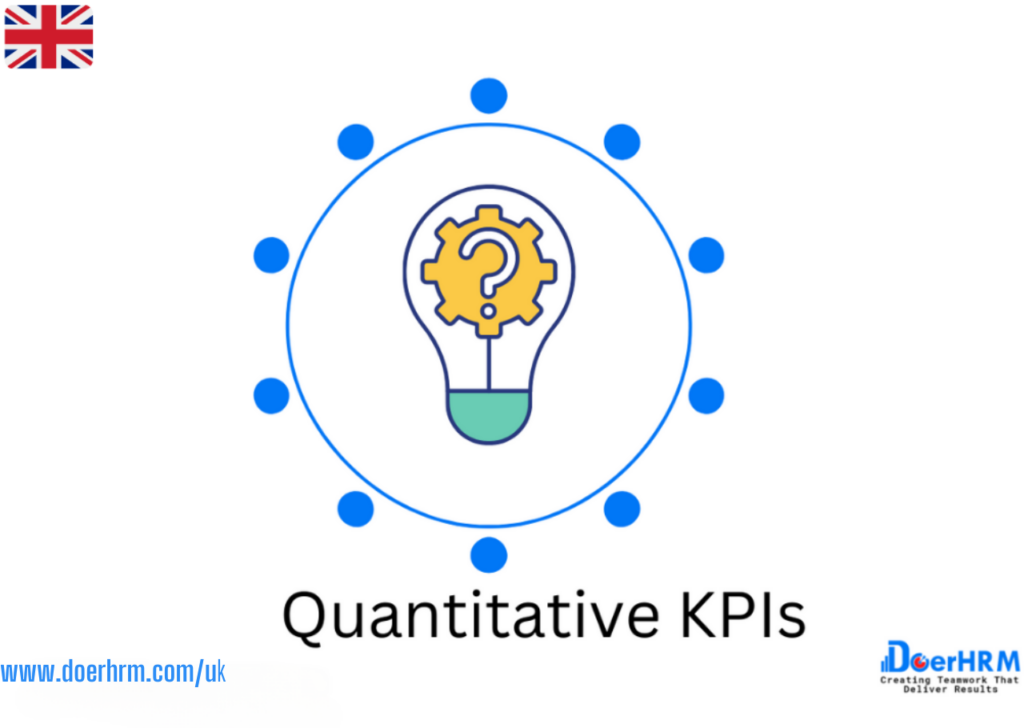
3. Leading KPIs
Leading KPIs are predictive measurements that are use to forecast future performance. These KPIs are leading indicators of performance, meaning they are early warning signs of potential problems or opportunities. Leading KPIs are often use in industries with long lead times, such as construction or manufacturing. Examples of leading KPIs include the number of leads generated, website traffic, and employee turnover rate.
4. Lagging KPIs
Lagging KPIs are retrospective measurements that are use to evaluate past performance. These KPIs are lagging indicators of performance, meaning they provide insights into past performance after the fact. Lagging KPIs are commonly use to track financial and operational performance, such as revenue, profit, and customer retention rates.
In summary, organizations can use a combination of quantitative and qualitative KPIs, as well as leading and lagging KPIs, to track and evaluate their performance. The selection of KPIs should be based on the specific goals and objectives of the organization, and they should be regularly reviewed and updated to ensure they remain relevant and effective.
5. Creating KPIs
Creating effective Key Performance Indicators (KPIs) requires a systematic approach that involves setting SMART goals, defining metrics, and selecting data sources. Here are the details of each step:
6. Setting SMART goals
The first step in creating KPIs is to set Specific, Measurable, Achievable, Relevant, and Time-bound (SMART) goals. This means that the goals should be clear, quantifiable, realistic, aligned with the organization’s objectives, and have a deadline. For example, a SMART goal could be to increase website traffic by 20% within the next six months.
7. Defining metrics
Once the SMART goals have been set, the next step is to define the metrics that will be use to measure progress towards these goals. The metrics should be closely aligned with the SMART goals and should be quantifiable. For example, if the SMART goal is to increase website traffic, the metrics could be the number of unique visitors, the bounce rate, and the time spent on the site.
8. Selecting data sources
The final step in creating KPIs is to select the data sources that will be use to collect the necessary information. The data sources should be reliable and should provide accurate and timely data. For example, if the metrics to be tracked are related to website traffic, the data sources could include Google Analytics, social media analytics, and customer surveys.
It is also essential to consider the frequency of data collection and reporting. Some KPIs may require real-time monitoring, while others may be tracked on a weekly, monthly, or quarterly basis.
To conclude, creating effective KPIs involves setting SMART goals, defining metrics, and selecting reliable data sources. By taking a systematic approach to KPI development, organizations can ensure that they have the right data to measure progress towards their goals and make informed decisions to improve performance.
Related article : Top 20 HR KPI Metrics & Examples for Human Resource Manager, Executive, Department – HRMS
KPI Templates
KPI templates are pre-designed frameworks that can be use to create Key Performance Indicators (KPIs) quickly and easily. These templates can help organizations save time and effort by providing a structure for identifying and tracking the metrics that are most important for achieving their goals. The KPI meaning can vary depending on the industry and specific goals, but using templates can ensure that the KPIs are aligned with the organization’s objectives. Here is an overview of different KPI templates and examples of KPI templates for different industries and goals:
1. Balanced Scorecard Template
The Balanced Scorecard is a popular KPI framework that helps organizations to align their KPIs with their strategic objectives. The Balanced Scorecard template typically includes four perspectives: Financial, Customer, Internal Processes, and Learning & Growth. Each perspective includes a set of KPIs that are relevant to the specific objectives of that perspective.
2. Sales KPI Template
Sales KPI templates are designed to help organizations track and evaluate their sales performance. Sales KPI templates typically include metrics such as Revenue, Gross Profit Margin, Conversion Rate, and Average Order Value. These KPIs are important for measuring the effectiveness of sales strategies and identifying opportunities for improvement.
3. Marketing KPI Template
Marketing KPI templates are designed to help organizations track and evaluate their marketing performance. Marketing KPI templates typically include metrics such as Website Traffic, Lead Generation, Conversion Rate, and Customer Acquisition Cost. These KPIs are important for measuring the effectiveness of marketing strategies and identifying opportunities for improvement.
4. Human Resources KPI Template
Human Resources KPI templates are designed to help organizations track and evaluate their HR performance. HR KPI templates typically include metrics such as Employee Turnover Rate, Time to Hire, Training and Development Hours, and Employee Engagement. These KPIs are important for measuring the effectiveness of HR strategies and identifying opportunities for improvement.
5. Project Management KPI Template
Project Management KPI templates are designed to help organizations track and evaluate their project performance. Project Management KPI templates typically include metrics such as Budget Variance, Schedule Variance, Resource Utilization, and Project Completion Rate. These KPIs are important for measuring the effectiveness of project management strategies and identifying opportunities for improvement.
KPI Examples
Moreover, KPIs are essential metrics that help organizations track their progress toward achieving their goals. The KPI’s meaning is to provide objective, quantifiable data that can be use to evaluate performance and progress. Here are examples of KPIs for different departments and functions:
1. Sales KPIs
Sales KPIs are use to measure the effectiveness of a company’s sales strategies and activities. Examples of sales KPIs include:
- Revenue: The total amount of money generated by sales
- Gross Profit Margin: The percentage of revenue that remains after deducting the cost of goods sold
- Conversion Rate: The percentage of leads that result in a sale
- Average Order Value: The average amount of money spent by a customer in a single transaction
- Sales Growth: The percentage increase in sales revenue over a specific period
Related: Sales KPI: 28 Metrics for Sales Manager – Examples, Meaning, Template, Dashboard
2. Marketing KPIs
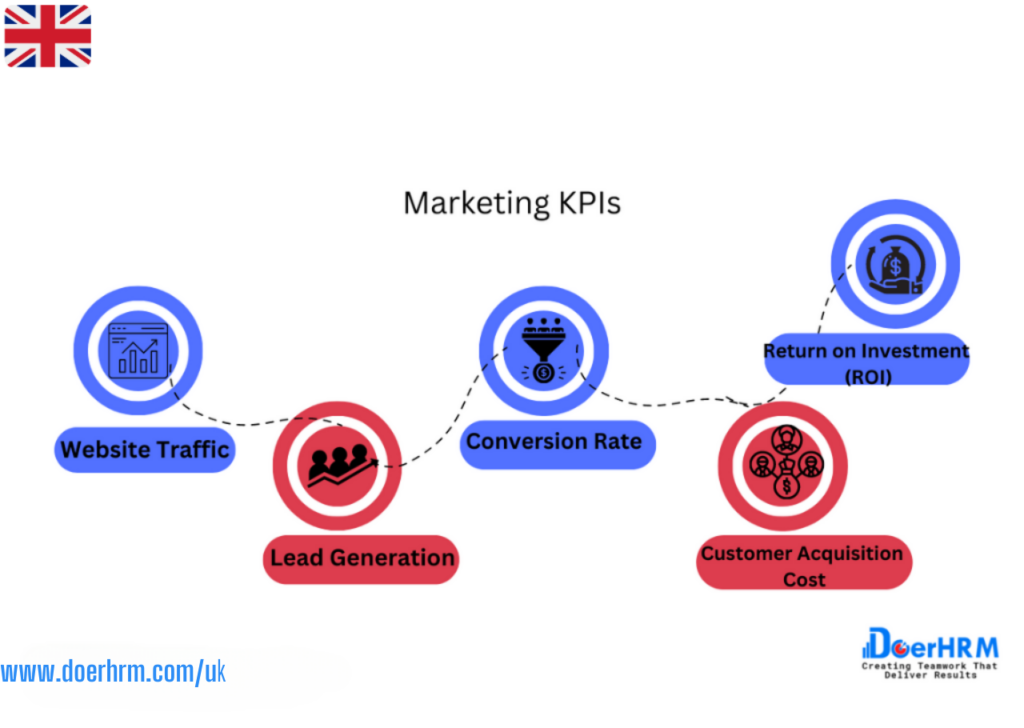
Marketing KPIs are use to measure the effectiveness of a company’s marketing strategies and activities. Examples of marketing KPIs include:
- Website Traffic: The number of visitors to a website
- Lead Generation: The number of leads generated through marketing activities
- Conversion Rate: The percentage of leads that result in a sale
- Customer Acquisition Cost: The amount of money spent on marketing to acquire one new customer
- Return on Investment (ROI): The ratio of the revenue generated by marketing activities to the cost of those activities
3. Finance KPIs
Finance KPIs are use to measure the financial performance of a company. Examples of finance KPIs include:
- Gross Profit Margin: The percentage of revenue that remains after deducting the cost of goods sold
- Net Profit Margin: The percentage of revenue that remains after deducting all expenses
- Return on Investment (ROI): The ratio of the profit generated by an investment to the cost of that investment
- Debt-to-Equity Ratio: The ratio of a company’s debt to its equity
- Cash Flow: The amount of cash that flows in and out of a company
Related: KPI for Finance Department: 26 Essential Metrics to Monitor for Finance Manager with Examples
4. HR KPIs
HR KPIs are use to measure the effectiveness of a company’s HR strategies and activities. Examples of HR KPIs include:
- Employee Turnover Rate: The percentage of employees who leave the company within a specific period
- Time to Hire: The time taken to fill a vacant position
- Training and Development Hours: The number of hours spent on employee training and development
- Employee Engagement: The level of employee satisfaction and commitment to the company
- Diversity and Inclusion: The percentage of employees from diverse backgrounds
Related: Top 11 Important Training KPIs HR Managers Should Have
5. Customer Service KPIs
Customer Service KPIs are use to measure the effectiveness of a company’s customer service strategies and activities. Examples of customer service KPIs include:
- Customer Satisfaction Score (CSAT): The percentage of customers who are satisfied with the company’s products or services
- Net Promoter Score (NPS): The percentage of customers who are likely to recommend the company to others
- First Call Resolution Rate: The percentage of customer inquiries that are resolved on the first call
- Average Response Time: The average time taken to respond to a customer inquiry
- Customer Retention Rate: The percentage of customers who continue to use the company’s products or services over time
In conclusion, KPIs are essential metrics that help organizations measure their progress towards achieving their goals. By tracking the right KPIs, companies can make informed decisions to improve their performance and achieve success.
Related: Practical KPI Examples
Measuring KPIs and KPI Meaning: Best Practices for Tracking Progress and Achieving Goals
While creating and implementing KPIs can be an effective way to measure and achieve organizational goals, it is important to follow best practices to ensure they are effective. Here are some best practices for KPIs:
1. Regularly review and update KPIs
Firstly, it is important to regularly review and update KPIs to ensure that they remain relevant and aligned with organizational goals. Businesses should review KPIs at least once a year or whenever there is a change in the organization’s goals, strategies, or processes. This will help organizations to identify new KPIs that need to be added, redundant KPIs that need to be removed, and the KPIs that need to be updated.
2. Avoid setting too many KPIs
Secondly, it is essential to avoid setting too many KPIs as it can lead to information overload and make it difficult for businesses to focus on the most important metrics. Instead, organizations should focus on a few key metrics that align with their goals and help them measure their progress effectively.
3. Ensure KPIs align with organizational goals

Thirdly, KPIs should align with the organization’s goals to ensure that they are relevant and meaningful. This will help businesses measure the progress towards achieving their goals and make informed decisions to improve their performance. Organizations should ensure that KPIs are specific, measurable, attainable, relevant, and time-bound (SMART) to ensure they are aligned with the organization’s goals.
4. Involve stakeholders in the KPI process
Finally, it is important to involve stakeholders in the KPI process to ensure that they are engaged and invested in the process. This will help to ensure that the KPIs are relevant, meaningful, and aligned with organizational goals. By involving stakeholders, organizations can also ensure that they have buy-in from everyone and that there is a shared understanding of the KPIs.
Understanding the KPI Meaning: Ways To Measure KPI
When it comes to understanding the KPI meaning and measuring KPIs, there are various methods that organizations can use to evaluate their performance. These methods include:
1. Quantitative methods
Quantitative methods involve measuring KPIs using numerical data, such as sales revenue, customer satisfaction scores, or website traffic. Quantitative methods are objective and easily measurable, making them useful for tracking progress towards specific goals.
2. Qualitative methods
Qualitative methods involve measuring KPIs using non-numerical data, such as customer feedback or employee engagement surveys. Qualitative methods provide insights into subjective experiences and opinions, making them useful for identifying areas for improvement.
3. Leading indicators
Leading indicators are KPIs that measure predictive factors that are expected to influence future performance. Examples of leading indicators include market trends, customer behavior, or employee turnover rates.
4. Lagging indicators
Lagging indicators are KPIs that measure historical performance, such as sales revenue or profit margins. Lagging indicators provide insight into past performance but may not be as useful for predicting future performance.
5. Comparative methods
Comparative methods involve comparing KPIs to industry benchmarks or to previous performance. These methods help to provide context for evaluating performance and identify areas for improvement based on the KPI meaning and objectives.
6. Balanced scorecards
Balanced scorecards provide a comprehensive view of organizational performance by measuring KPIs across multiple dimensions, such as financial performance, customer satisfaction, and employee engagement.
It’s important to select the right measurement methods for each KPI to ensure that they accurately reflect progress towards business goals and objectives. By choosing the right measurement methods, organizations can gain valuable insights into their performance and make data-driven decisions to improve their operations.
Related: How To Measure Employee KPI
Steps To Implement KPIs Effectively
Implementing KPIs in an organization requires careful planning and execution. Here are the steps to implement KPIs effectively:
1. Identify business goals and objectives
The first step in implementing KPIs effectively is to understand the KPI meaning and identify the specific goals and objectives that the organization wants to achieve. This involves aligning KPIs with the organization’s mission and vision, and ensuring that they are relevant and meaningful to the business.
2. Define SMART KPIs
Once the business goals and objectives are identified, the next step is to define SMART (Specific, Measurable, Achievable, Relevant, Time-bound) KPIs. This involves selecting the metrics that will be use to measure progress towards the business goals and setting targets for each KPI. It’s important to ensure that each KPI has a clear KPI meaning and is relevant to the business objectives.
Related: The Complete Guide Of KPIs For Performance Management
How Does KPI Software Help Managers?
Obviously, KPI software is an essential tool for managers looking to improve their organization’s performance by monitoring and evaluating Key Performance Indicators (KPIs). It provides a centralized platform for collecting, analyzing, and reporting on KPI data, enabling managers to gain greater visibility into their organization’s performance and make data-driven decisions based on the KPIs’ meaning and insights.
At DoerHRM Software, we offer a KPI software solution that is designed to help managers track and monitor their organization’s key metrics in real-time. Our software provides a user-friendly dashboard that displays KPI data in an easily understandable format, allowing managers to quickly identify trends, patterns, and areas for improvement.
Our KPI software can help managers in several ways, including:
1. Easy tracking and monitoring of KPIs
Allows managers to track and monitor KPIs easily in real-time, providing them with up-to-date information on organizational performance. This enables them to identify areas that require attention and take corrective action quickly.
2. Automated data collection and analysis
Automates the process of data collection and analysis, eliminating the need for manual data entry and reducing the risk of errors. This saves managers time and allows them to focus on analyzing the data and making data-driven decisions.
3. Customizable reporting
Allows managers to customize reports based on their specific needs and preferences, providing them with the information they need to make informed decisions. This also enables them to share relevant information with stakeholders and team members more effectively.
4. Real-time alerts
Can provide real-time alerts when KPIs fall below target levels, allowing managers to take immediate action to address issues and prevent further problems from arising.
5. Greater visibility into organizational performance
Provides managers with greater visibility into organizational performance, enabling them to identify trends and patterns in performance over time. This information can help them make informed decisions and develop strategies to improve performance.
Occasionally, KPI software can help managers make better-informed decisions by providing them with timely, accurate, and relevant information about organizational performance. This can lead to improved efficiency, productivity, and profitability for your organization.
We invite you to try our DoerHRM Software for free for 14 days, with no commitment or obligation. You can also join our free workshop to learn more about our software’s features and capabilities or schedule a 30-minute free consultation with our expert to discuss how our KPI software can help you achieve your business goals.
Don’t let poor performance hold your organization back. Try our DoerHRM Software today and take the first step towards driving growth and success for your organization.
Conclusion
The utilization of key performance indicators (KPIs), essential metrics, allows companies to track their progress towards achieving objectives. The primary aim of KPIs is to clearly indicate how effectively a company is performing in relation to its goals, offering valuable insights into performance and enabling data-driven actions to improve processes.
Creating KPIs involves setting SMART objectives, selecting relevant metrics, and choosing appropriate data sources. KPIs can be quantitative or qualitative, leading or trailing, tailored to align with business aims and objectives using various KPI templates.
Establishing KPIs enables businesses to monitor progress, identify areas for improvement, and take corrective measures to stay on course towards meeting objectives.
Adhering to best practices is crucial when implementing KPIs in an organization. These practices include regularly evaluating and updating KPIs, avoiding overloading with too many KPIs, ensuring alignment with organizational objectives, and involving stakeholders in the KPI process. By following these best practices, organizations can develop effective KPIs to assess performance and achieve objectives.
KPIs serve as a critical tool for organizations to evaluate performance, track progress, and facilitate growth. Utilizing appropriate KPIs enables firms to comprehend their performance and make informed decisions to enhance operations and achieve objectives.
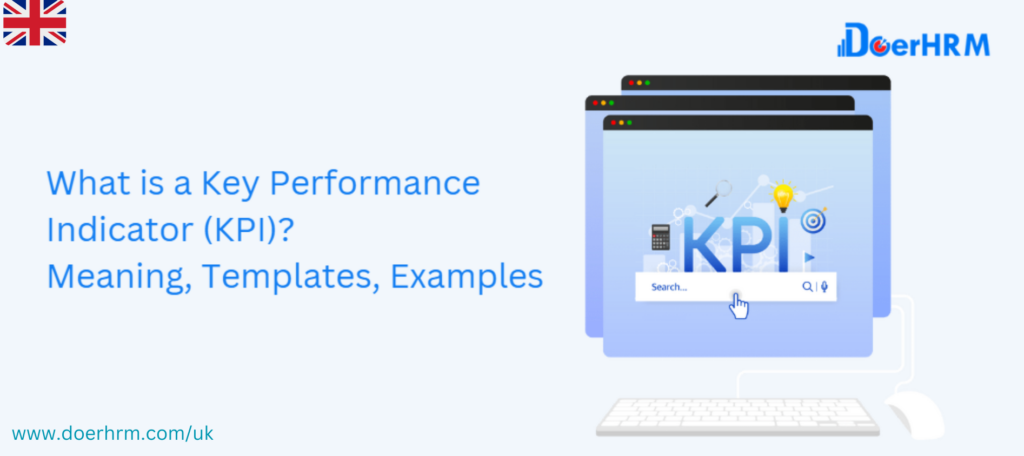
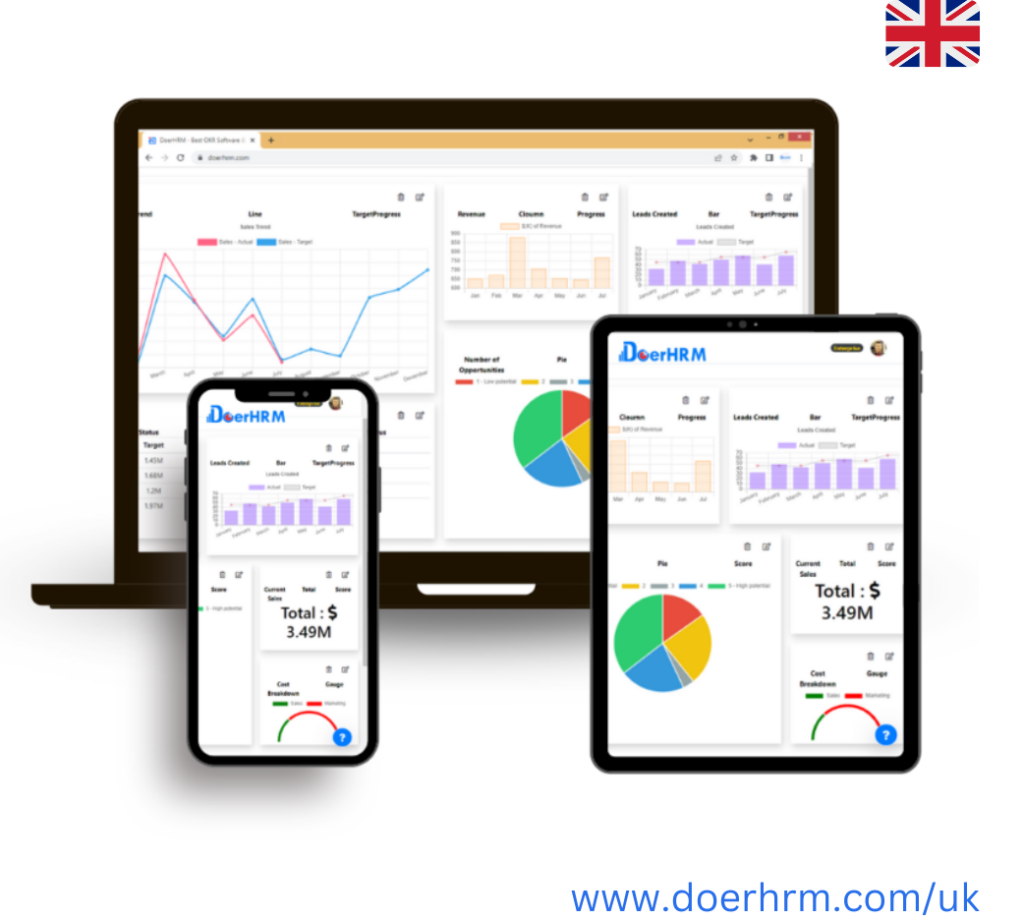

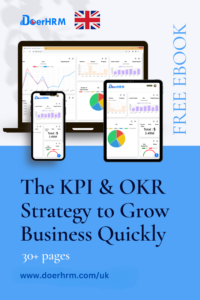







Your expertise shines through your writing. I always come away from your articles with a deeper understanding of the topic at hand. Thank you for generously sharing your knowledge.
I wanted to express my gratitude for the positive impact your blog has had on my personal growth journey. Your articles have given me the tools and inspiration to become a better version of myself. Thank you for being a guiding light.
Thank you for your shening. I am worried that I lack creative ideas. It is your enticle that makes me full of hope. Thank you. But, I have a question, can you help me?
Thanks for sharing your thoughts. I really appreciate your efforts and I am waiting for your further write ups thank you one again.
Can you be more specific about the content of your article? After reading it, I still have some doubts. Hope you can help me.
Peculiar article, exactly wwhat I wanted too find.
I’m gone to convey my little brother, that he should also pay a visit this website on regular
basis too get updated from latest news.
I am truly thankful to the owner of this site who has shared this great article at at this place.
I’m extremely impressed along with your writing skills
as neatly as with the layout on your weblog. Is that this a paid
topic or did you customize it yourself? Either way keep up
thee nice high quality writing, it’s uncommon to
look a great weblog like this one nowadays..
Your article helped me a lot, is there any more related content? Thanks!
bookmarked!!, I love your blog!
Wow, DoerHRM nailed it with this article on Key Performance Indicators (KPIs)! This guide is a must-read for any manager or team leader seeking to enhance their decision-making process. The detailed breakdown of various KPI types, such as financial, operational, and customer-related, opened my eyes to the vast range of metrics available. After reading this, I have a better understanding of selecting the most relevant KPIs for my department’s goals, ultimately leading to improved performance and streamlined processes. Thank you, DoerHRM!”
hank you, DoerHRM, for this enlightening article on Key Performance Indicators (KPIs)! As someone new to the concept, this piece provided a clear and concise explanation of what KPIs are and their significance in measuring performance. The inclusion of templates and examples was incredibly helpful, as it allowed me to grasp the practical application of KPIs in different scenarios. Now, armed with this knowledge, I can confidently set and track KPIs to drive success in my projects and team. Great read!